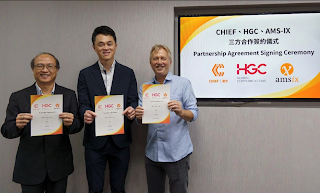Adtran, in collaboration with Iridium Communications, has announced the launch of its advanced synchronization solutions featuring Iridium Satellite Time and Location (STL) technology in Europe and the Asia-Pacific region. This move addresses the growing threats to Global Navigation Satellite Systems (GNSS) by providing enhanced resilience and reliability for critical infrastructure, including 5G networks and defense systems. The OSA 5405-S PTP compact grandmaster clock with STL capabilities and the OSA 5400 STL module are now available to timing network operators in Western Europe, major countries in Eastern Europe, Turkey, and parts of Asia-Pacific, including the majority of Southeast Asia, Japan, and South Korea. Leveraging low-Earth orbit (LEO) satellites, these solutions deliver precise and secure positioning, navigation, and timing (PNT) services, ensuring continuous synchronization even in compromised GNSS environments.
Iridium STL services utilize LEO satellites to transmit encrypted signals that are significantly stronger than those of GNSS, enhancing their ability to penetrate urban canyons and indoor areas without rooftop antennas. Now a key feature of Adtran’s Oscilloquartz product lineup, the versatile OSA 5405-S PTP grandmaster clock supports STL time services, multi-constellation GNSS, and various other timing sources within a zero-trust architecture. This architecture leverages multiple diverse timing sources for enhanced resilience. Additionally, the OSA 5400 STL module extends these advanced STL/GNSS receiver capabilities to third-party equipment requiring timing, enabling precise, robust synchronization for a wide range of applications.
Highlights:
- Adtran and Iridium launch synchronization solutions featuring Iridium® STL technology in Europe and Asia-Pacific.
- Solutions enhance the resilience of critical infrastructure, such as 5G networks and defense systems.
- Iridium STL services utilize LEO satellites to provide stronger, encrypted signals that penetrate challenging environments.
- The OSA 5405-S PTP grandmaster clock and OSA 5400 STL module support multiple timing sources within a zero-trust architecture.
- Available purchasing options include an annual service license or bundled equipment for long-term financial planning.
“We partnered with Iridium to bring the benefits of its STL services to critical timing infrastructure around the world because we share a common goal. We’re committed to making PNT networks as resilient and secure as possible. STL is a powerful solution for fortifying zero-trust architecture and ensuring reliable PNT even when GPS signals fail, making it ideal for both indoor and challenging outdoor locations. By empowering operators of mission-critical networks to access reliable timing in the most demanding environments, we’re also eliminating the need to install outdoor antennas and core through concrete, significantly reducing expenses,” commented Gil Biran, GM of Oscilloquartz, Adtran. “We’re excited to bring these advantages to so many more customers across Europe and APAC. Today’s announcement marks a significant advancement for the network operators and people of these regions, whose daily lives increasingly depend on robust PNT.”

“The weakness of GNSS signals is increasingly being exploited to create serious problems. As Europe, APAC and the rest of the world have become more dependent on PNT data, attacks on GNSS have only escalated, creating an urgent need to pivot away from the exclusive use of these satellites,” said Michael O’Connor, executive vice president of PNT at Iridium. “By integrating our STL service into Adtran Oscilloquartz devices and making it available across much of Europe and key areas of APAC, we’re providing network operators with valuable new options. They can choose to use our solution as a primary source of timing data in indoor environments, or they can leverage our secure, high-strength LEO signals as a backup source of PNT information when GNSS is unavailable. This offers the strongest ever safeguard against the threats that compromise so many aspects of our daily lives.”
https://www.adtran.com/en/newsroom/press-releases/20240624-adtran-and-iridium-strengthen-pnt-resilience-in-europe-and-asia-pacific-with-stl-technology



















